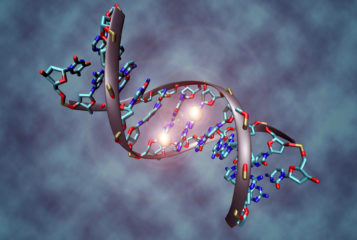A test has been developed that can detect at least eight different types of cancer, by characterising the size of tumour DNA fragments in the blood.
Sequencing circulating tumour DNA (ctDNA) is typically time-consuming and technically difficult. Dr Florent Mouliere at the University of Cambridge and his team have developed a new approach that doesn't need genetic sequencing and has potentially greater accuracy. The test measured fragments of ctDNA in the blood, which the researchers found had a different size profile than non-tumour DNA fragments.
The research, published in Science Translational Medicine, measured ctDNA in 344 plasma samples from 200 cancer patients, comparing it with non-tumour DNA fragments (called cell-free DNA, or cfDNA) in plasma samples from 65 healthy people.
They found that ctDNA tended to be shorter than normal cfDNA. Tumour DNA fragments typically tended to be between 90 and 150 base pairs long. In healthy people, cfDNA was usually around 166 base pairs long.
The team then tested the technique on samples from cancer patients and healthy controls. It was able to detect 94 percent of breast, bowel, ovary, skin and bile duct cancers in 68 patients, with a false positive rate of 2.5 percent (ie the rate at which it saw a cancer that was not there). These are cancers known to shed large quantities of ctDNA into the bloodstream.
In cancers that don't release as much ctDNA – including pancreas, kidney and brain cancers – the test was able to identify tumours in 65 percent of cases when tested on 57 patients.
Currently, accessing solid tumours is difficult, and usually done through invasive biopsy. Blood tests for cancer, sometimes called liquid biopsies, are a growing area of interest, although concerns have been raised about those already on the market (see BioNews 882 and 819).
One potential application for this technique is not just to replace invasive biopsy, but to act as a diagnostic screening tool. At present, most cancer screening tools are limited to tumours in specific areas of the body – for example, mammograms for finding breast cancer.
However, whether the test will be as accurate in a clinical setting is still in question, said Dr Ellen Heitzer and Professor Michael Speicher from the Medical University of Graz, Austria – who were not involved in the study – in an opinion piece in the same issue of the journal. They also emphasise that researchers don't yet understand the full mechanism behind ctDNA sizes.
Dr Heitzer and Professor Speicher concluded: 'The possibility of early identification of individuals with cancer offers the potential for new screening strategies and may change the therapeutic outcomes for these patients.'





Leave a Reply
You must be logged in to post a comment.